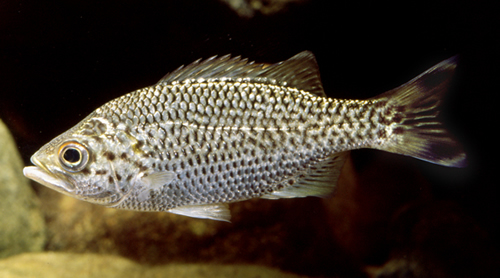
Fish can be especially susceptible to drug residues. Chris Ison/PA
By Karin Helwig, Glasgow Caledonian University
It’s not a thought that occurs to most of us, but flushing the toilet doesn’t just mean disposing of our bodily waste. We’re also flushing away some of the medicine we take down with it. Our contraceptive pills, analgesics, antidepressants, blood thinners and beta blockers all have a life in our nation’s waterways once their work on ourselves is done. And for decades, scientists have been expressing concern over how the chemicals we excrete in this way affect the environment.
The good news is that concentrations of chemicals in the water are not thought to be a concern for human health. You would need to drink hundreds of litres of surface water to take in as much as a single daily dose of any medication. The bad news is that the same cannot be said for wildlife.
In Washington’s Potomac River, male fish have exhibited female traits as a result of hormones being flushed into the water and fish behaviour changes have been ascribed to persistent antidepressants in wastewater.
Another case of medicines harming animals occurred when the vulture population in India crashed due to poisoning with Diclofenac, a drug administered to the cattle they ate. But Diclofenac flushed down the toilet by humans is also of concern. Along with two contraceptive hormones, the anti-inflammatory drug is now included on an EU watch list of substances which will be monitored to assess the risk they present to the aquatic environment.
Disposal of unwanted medicines down the drain may also be a factor, as in most countries only a few people take leftover drugs back to the pharmacy. But the majority of pharmaceutical pollution in Europe does happen via human excretion. And given the fact we excrete about 70% of the medicine we take (up to 90% in the case of antibiotics), you’d assume we could just take less of it.
But for most medicines to be effective, it is necessary to maintain a certain concentration of the drug in your blood plasma. And as the kidneys continually filter the blood, the drug is gradually removed and excreted via urine into the sewer and it is necessary to keep topping up the drug to maintain the right concentration.
Our consumption of certain drugs is going up steadily, and in the case of some drug groups, such as antidepressants, quite dramatically.
Most drugs are only partially removed by conventional wastewater treatment works and so enter the aquatic environment. In some rivers, treated effluent from multiple treatment works can make up more than half of the total flow, so persistent chemicals can accumulate.
How bad are these substances for the environment? One problem is that it’s almost impossible to measure. For a start, there are about 3000 different drugs licensed in Europe, some very toxic, others harmless. These drugs reach the environment in an endless variety of cocktails, some of which may be much more harmful than others.
Some species are also more sensitive than others. Many effects that don’t actually kill the wildlife are not well understood. Sometimes physical changes might be seen – for example fish embryos having kinked tails instead of straight ones. How exactly this affects the fish population, and perhaps more importantly, their function in an ecosystem, is not clear.
Environmental changes can occur quite suddenly when changes have gone too far for the system to work. When the contraceptive hormone EE2 reached levels of five parts per trillion in Canadian lakes, one fish species population crashed. With thousands of drugs, infinite combinations and hundreds of thousands of aquatic species, an exact figure on safe levels can’t be given.
However, the benefits that medicines bring, and particularly prescribed medicines, are undisputed and no-one wants to go back to a time where they weren’t available.
It is possible to stop residues reaching the environment by advanced sewage treatment technologies that are capable of removing the pollutants: advanced oxidation techniques using UV or ozonation, for example, or filtering the water through activated carbon. But these measures are expensive and energy intensive. Site-specific water treatment, in hospitals for example, could be used to clean water before it enters the main drain, but on average only about 20% of all drugs are taken in hospitals.
But we need to do more. A first step is to raise awareness of medicines' environmental effects. We are currently investigating whether people – including doctors – could change how they consume, prescribe and dispose of medicines.
It could be worth looking at our buying habits of non-essential drugs and balancing consideration of the environment as well as therapeutic benefit and cost, when deciding what medicines to buy or prescribe.
It might even be that patients taking the most toxic medication may be asked how they would feel about using devices catching their urine so it can be disposed of safely.
Ultimately, society needs to decide whether we want to pay extra for advanced sewage treatment, whether we are prepared to change our pharmaceutical consumption or use “green pharmacy” products from the pharmaceutical industry – or a combination of all of these.
The noPILLS project, on which Karin Helwig is a researcher, receives funding from Interreg IV-B North-West Europe.

This article was originally published at The Conversation.
Read the original article.






 Reference:
Reference: